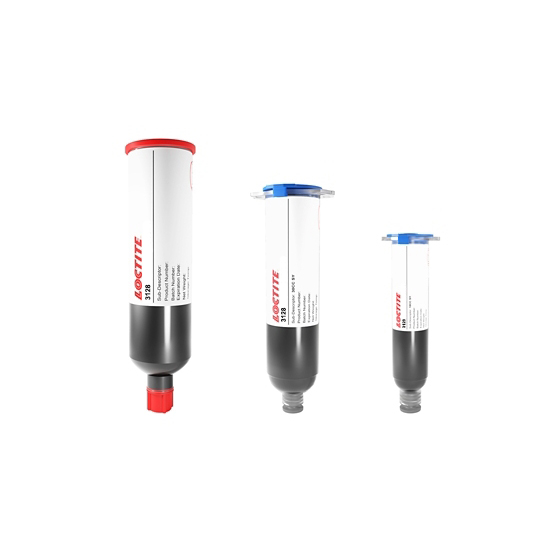LOCTITE 3128
- One component
- Low temperature cure
- Bonding heat sensitive components
Product Description
LOCTITE 3128 is a one part, heat curable epoxy designed to cure at low temperature and gives excellent adhesion on a wide range of materials in considerably short time. Typical applications include Memory cards, CCD/CMOS Assemblies and Lid/Cap attach for automotive optical sensors and 3d sensing modules.
LOCTITE 3128 can be successfully used as an Edgebond underfill, particularly suited where low curing temperatures are required for heat sensitive components. This low halogen, high viscosity, heat curable epoxy has a good adhesion to a variety of surfaces and a whopping 3 weeks of pot life.
LOCTITE 3128 has a fairly low CTE and warpage and as such has also been used on finger print sensor encapsulation with positive results. This is a camera/sensor market material so is not expected to pass very harsh reliability requirements.
Recommended cure schedule
- 20 minutes @ 80°C bondline temperature
- 60 minutes @ 60 °C bondline temperature
Note: Sufficient time must be added to allow the bond location to reach the desired cure temperature. Curing profiles should be developed for each device.
Technical Specifications
| General Properties | |||||||
| Specific Gravity Specific Gravity Specific gravity (SG) is the ratio of the density of a substance to the density of a reference substance; equivalently, it is the ratio of the mass of a substance to the mass of a reference substance for the same given volume. For liquids, the reference substance is almost always water (1), while for gases, it is air (1.18) at room temperature. Specific gravity is unitless. | 1.6 | ||||||
| |||||||
| |||||||
| Thermal Properties | |||||||
| Glass Transition Temperature (Tg) Glass Transition Temperature (Tg) The glass transition temperature for organic adhesives is a temperature region where the polymers change from glassy and brittle to soft and rubbery. Increasing the temperature further continues the softening process as the viscosity drops too. Temperatures between the glass transition temperature and below the decomposition point of the adhesive are the best region for bonding. The glass-transition temperature Tg of a material characterizes the range of temperatures over which this glass transition occurs. | 45 °C | ||||||
| |||||||
| Mechanical Properties | |||||||
| Elongation Elongation Elongation is the process of lengthening something. It is a percentage that measures the initial, unstressed, length compared to the length of the material right before it breaks. It is commonly referred to as Ultimate Elongation or Tensile Elongation at break. | 2.3 % | ||||||
| |||||||
| |||||||
| Physical Properties | |||||||
| Viscosity Viscosity Viscosity is a measurement of a fluid’s resistance to flow. Viscosity is commonly measured in centiPoise (cP). One cP is defined as the viscosity of water and all other viscosities are derived from this base. MPa is another common unit with a 1:1 conversion to cP. A product like honey would have a much higher viscosity -around 10,000 cPs- compared to water. As a result, honey would flow much slower out of a tipped glass than water would. The viscosity of a material can be decreased with an increase in temperature in order to better suit an application | 27,000 mPa.s | ||||||






